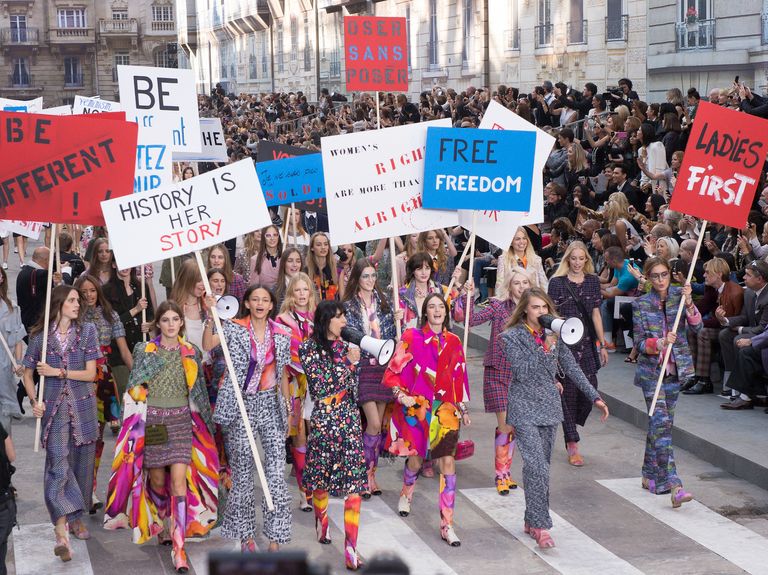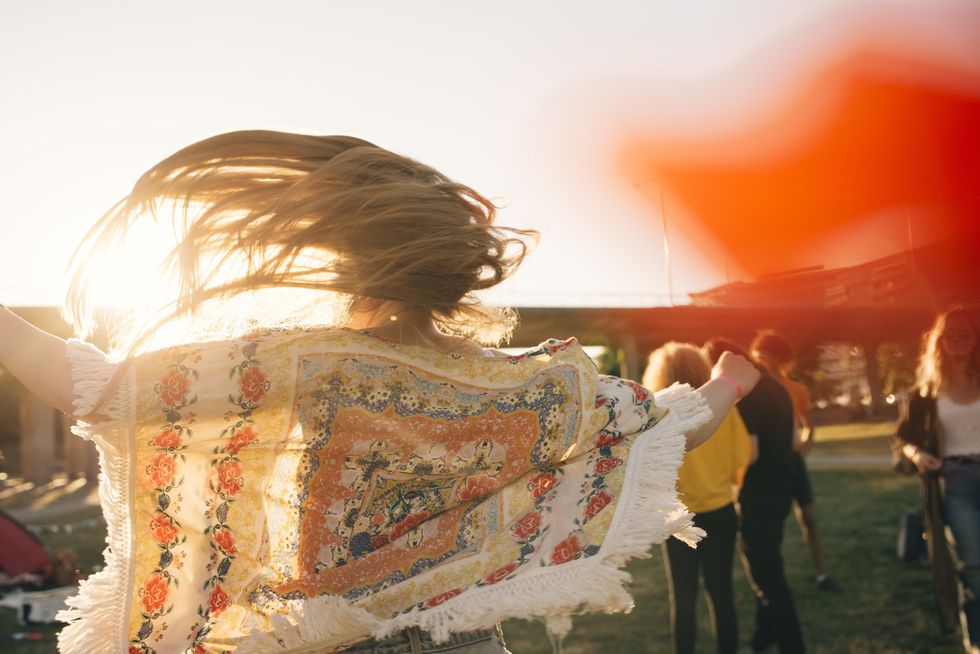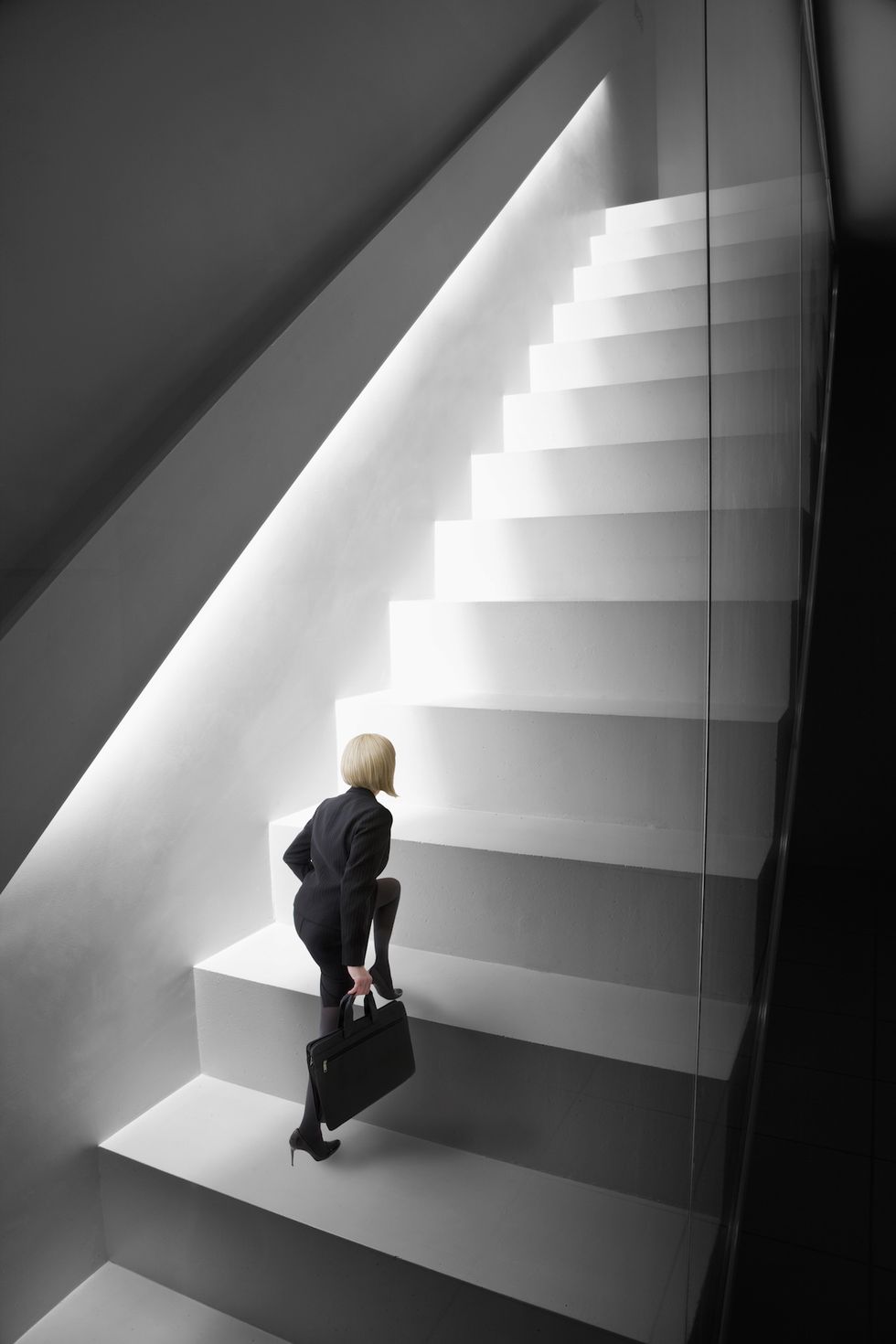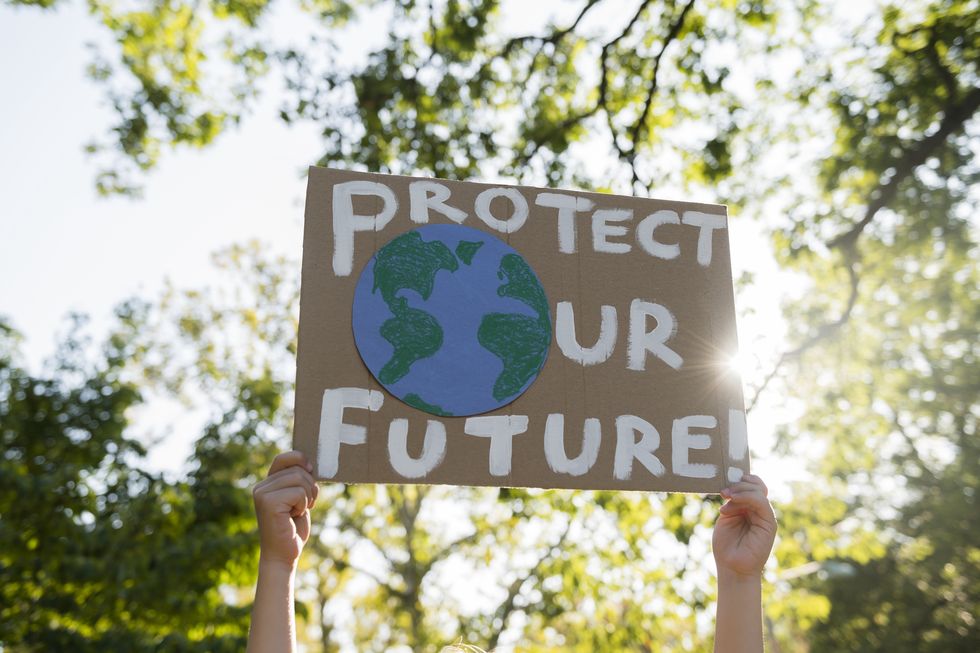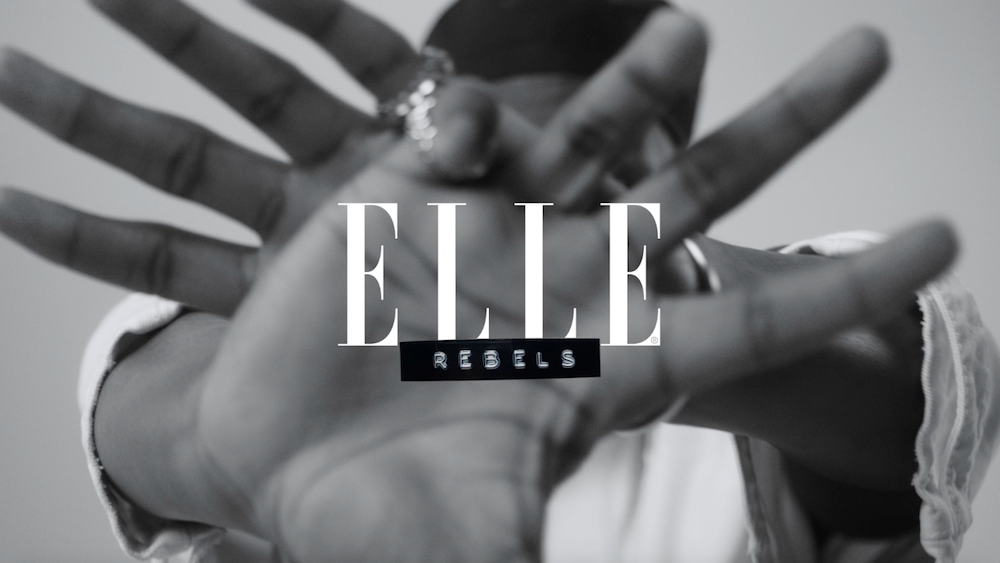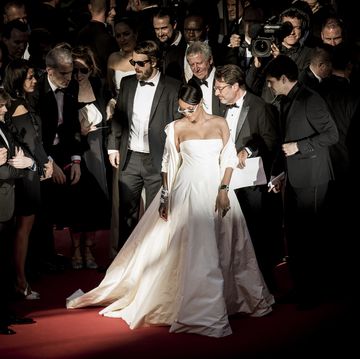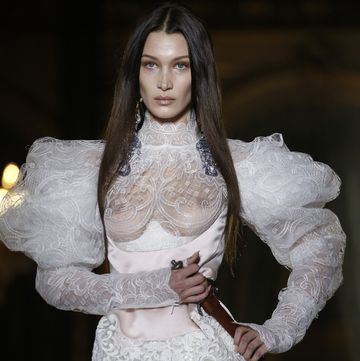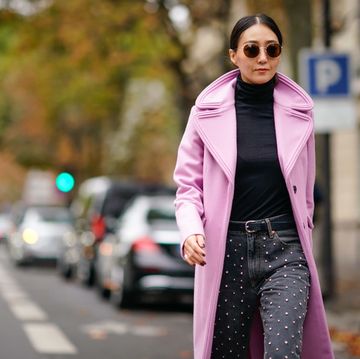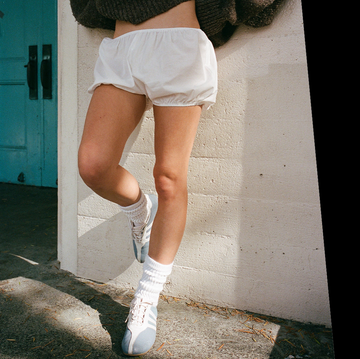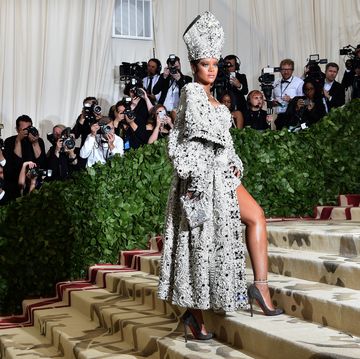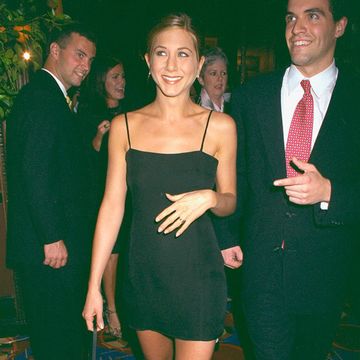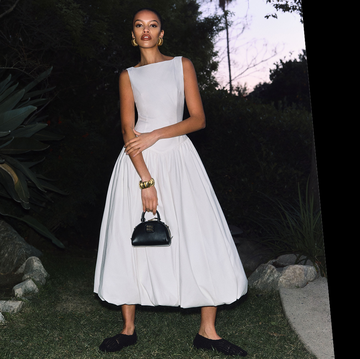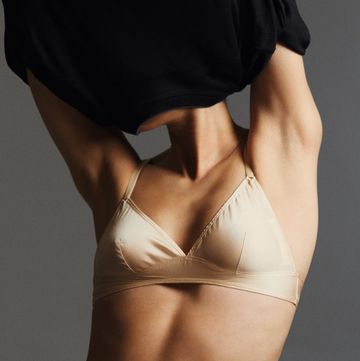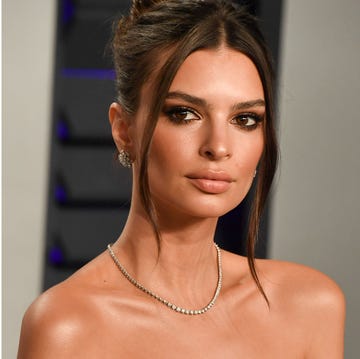My best friend Lili recently sent me a photo of us at a festival in the mid-1990s. I’m wearing a tutu over army fatigues, a giant cardigan and a top hat crowned in silver ribbons. She’s in a turquoise ball gown and Converse. We both have dreadlocks. We look ridiculous. We look happy.
In those days, we were part of a raggle-taggle tribe of environmental activists, fighting for a green future a decade before Greta Thunberg was even born. Lili was a hunt saboteur, I was a road protester, making my home in imperilled woodlands, in treehouses connected by walkways high above the ground.
Though our clothes were tatty and reeked of wood smoke, they were a uniform, a badge of membership. The omnipresent nose rings and rainbow sweaters meant we could recognise each other as members of the same community, driven by the same ideals.
We were young and exuberant; we were always cold. The things we wore were flamboyant and yet also practical, a bizarre fusion of Tank Girl and Scott of the Antarctic. After all, there’s no central heating in a treehouse. We wore climbing harnesses even in the pub, and laughed when we heard that nightclubbers in London were wearing them too.
Our intentions were serious, but our clothes were playful gestures towards the utopian future we longed to inhabit. No one was selling the things we wanted to wear, so we made them ourselves.
A friend spent an entire summer in a dress she cobbled together from two velvet curtains, secured with safety pins and plunging dangerously low at the back. We were like Peter Pan and the Lost Boys, overgrown children in a kingdom of trees.
I’d always been an eccentric dresser. At sixth form college, I was known for it, especially because of an oversized men’s suit jacket that I’d customised with lipstick. As a teenager, I’d quickly clocked the power of clothes to register dissent, communicating what I wasn’t, as well as who I hoped to become. During my protest years, my outfits proclaimed that I was a renegade, even a pariah.
Once I hitchhiked in a coat so thoroughly covered in mud and tar that the driver made me lock it in the boot. I’d expressed my contempt for the capitalist world that was driving us to ecological catastrophe, but it was beginning to occur to me that the extreme way I dressed was limiting my life.
As I reached my mid-twenties, I realised I didn’t want to inhabit a ghetto any more, to be so isolated from the rest of the world. Dropping out is the work of a moment. It took far longer to re-enter the world. I had ditched my English degree after three terms and my CV was so full of holes it resembled lace. The economic consequences of rejecting society were starting to bite. I worked as a cleaner, a receptionist in a doctors’ surgery, and a life model. My long-term dream of becoming a writer felt impossible to reach.
Thank god for adult education. The year I turned 30, I completed an NCTJ journalism course and, by some miracle, was hired by The Observer. Now clothes became a disguise, a way to appear normal, which I interpreted at the time as a kind of Nancy Mitford drag. I’d never had a real office job before and I had no idea how to present myself. I dressed in a uniform of Toast riding boots and tweed skirts, desperate to seem as if I hadn’t rolled in from the forest floor.
Everyone else in my new job had gone to Oxbridge and I felt like an imposter. I didn’t want to look different any more. It was too close to being out of place. Standing out felt dangerous. I found myself wearing heels and lipstick, keen to look like I belonged in the city, although I’d always hated make-up and performative femininity.
You might think that when I left journalism to become a freelance writer a few years later, I would’ve migrated straight back into casualwear, but I was still haunted by a need to prove my professionalism by how I dressed.
I’d always thought being a writer meant a secluded life, but the reality is that you are often on display. There were the photoshoots, launches, readings, tours. Those were the compliant years, my dismal mid-thirties, when I tried to look normal, groomed, feminine, gussied up in Whistles dresses, my hair blow-dried. When I look at those pictures now, I hardly recognise myself.
I was trying so hard to be someone else. It wasn’t until I moved to New York in 2011 that I reconnected with my furious teenage self. Who was I dressing for? Why was I trying so hard to please strangers? At home at last in a queer artistic community, I ditched the hateful show of femininity. My style icons were David Hockney and Freddie Mercury. I liked cashmere socks and Green Flash. I hated heels.
I chopped my hair into a boyish crop and immediately felt like myself again. Dresses and skirts disappeared from my wardrobe and I started buying androgynous clothes again: a moss green Acne sweater, a white shirt with a ruff by Isabel Marant that looked fit for an Elizabethan prince.
When back in London, I loved descending to the basement at Liberty to root through the menswear. I became adept at gender transgression, facing down assistants who’d invariably ask, ‘Is that for your son?’
These days, I wear trainers to everything. I want to walk fast, and I love the crisp colours of Feiyue plimsolls or the tangerine flash of Stella McCartney’s weird knitted ones for Adidas.
My uniform is sweaters and wide trousers, mainly jeans, with massive coats, in sober grey and navy with flourishes of canary yellow and cyclamen pink. I want to be cosy. I want to do my work, dig the garden and wear the same thing later at a lecture or party. I want to channel dandies and gender refusniks, my androgynous tribe: Quentin Crisp in a lavender shirt, Fran Lebowitz in Levi’s, Sir Walter Raleigh in sequins, blusher and a single pearl earring.
What we wear has so much power. Every item in our wardrobe communicates emotions and ideas, subtly or boldly expressing our political stance and point of view. You can dress to conform or to transgress, to fit in or to stand apart.
Using clothes to protest is not as simple as having a slogan emblazoned across your chest. I cringe at images of celebrities wearing a £580 Dior T-shirt that says: ‘We should all be feminists’. The sentiment is fine. It’s the price tag that worries me – the idea that political beliefs are something you shop for rather than embody. On the other hand, I love the photo of fashion designer Katharine Hamnett shaking hands with Margaret Thatcher in 1984, her baggy top emblazoned with the anti-nuclear message: '58% don’t want Pershing.'
But clothes don’t need words to be political. You don’t have to spell it out. The most subversive outfits I’ve seen were at the Rei Kawakubo/Comme des Garçons 2017 exhibition Art of the In-Between at New York’s Metropolitan Museum of Art. I walked around in tears, overwhelmed by the refusal to produce conventional silhouettes. There were so many possibilities of how a body could be. Clothes bulged and soared, resisted gravity, refused to be confined. There were exaggerated bellies, strange lumps and bumps, a beautiful reclamation of all the bulges women are trained to hide. It was liberating, an embodiment of feminism more radical than any slogan.
I can’t afford Comme, but that’s not the point. The ideas are free for all. Anyone can grab the spirit of individuality and resistance against the status quo, the leaden insistence on gender codes. I was 40 that year, but as I walked through the exhibition I felt 17 again, high on hope. That’s what I wanted then, and it’s what I still want: clothes that give me power; clothes that cut a new shape in the world.
This article originally appeared in the May issue of ELLE.
Olivia Laing's latest book Funny Weather: Art in an Emergency is out now.
Like this article? Sign up to our newsletter to get more articles like this delivered straight to your inbox.
In need of more inspiration, thoughtful journalism and at-home beauty tips? Subscribe to ELLE's print magazine now and pay just £6 for 6 issues. SUBSCRIBE HERE
